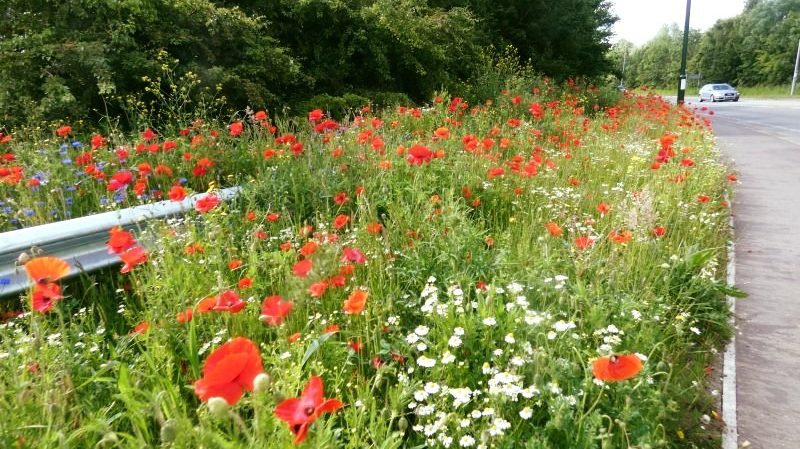 |
| Spared the blades of the mowing machine - poppies, oxeye daisies and cornflowers on a verge near Toll Bar |
SOME roadside verges in North East Lincolnshire are soon set to get a whole lot more colourful.
The council has unveiled a project - the 'wildflower management scheme' - which seeks to encourage nature by allowing wildflowers and beneficial insects such as butterflies and bees to flourish.
Says a spokesperson: "Grass verges at select sites will be spared from mowing.
"We ant to create 'green corridors' by allowing wildflowers to flourish.
"Any new planting will involve native species suited to the soil conditions."
Says NELC's portfolio for the environment, Cllr Stewart Swinburn: “Grass cutting will scaled back in to create attractive natural areas/
"This will also help reduce fuel costs and staff time."
He continued: "What's not to like about bringing natural beauty to our roadsides?
"Wildflowers not only look stunning but also provide a habitat for birds, bees and butterflies."
"What is more, flowers can also help to prevent flooding because plants absorb excess rainwater.
Signs have been put up on Humberston Road, Kings Road, outside Grimsby municipal offices and along the banks of Cleethorpes Boating Lake to identify the wildflower areas.
More flowers will be planted in these areas over the coming weeks to add to the wildflower sites already found across the borough.
Says NELC's ecology manager, Rachel Graham: “These are some natural regeneration areas where we haven’t planted any seeds.
"Some flowers bloom on their own without the need for intervention.
“Different plants need different types of soil and nutrients to thrive. The grass verges were selected for their soil, which already supports wildflowers.
“Bee orchids are already present in these areas which is a good indicator that there will be diverse potential for other wildflowers at those sites.
“One in seven flower species in the UK is at risk of extinction, so it’s important we do what we can to buck that trend.”
North East Lincolnshire Council has an interactive map to show which grassy areas are being maintained.
The Grimsby News says: Hats off to the council, especially Cllr Swinburn and Rachel Graham! This is a great initiative. For too long, the authority has lagged behind its counterparts in encouraging, enhancing and showcasing its impressive but threatened myriad of wildlife. With a bit more outside-the-box thinking it might soon cotton on to the potential for all-year eco-tourism, especially as the borough's coastline is one of the most important bird migration flyways in the world. One caveat - the council's planning department needs to be on the same page. Over the past couple of decades, much of the borough's biodiversity has, alas, been lost by thoughtless decision-making, a trend that urgently needs to be reversed.


No comments:
Post a Comment